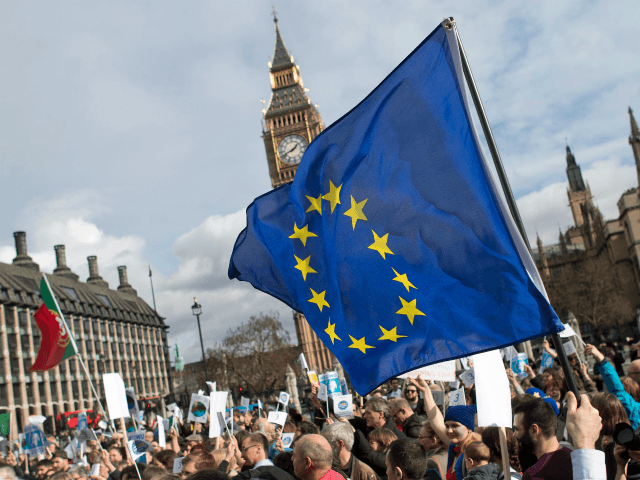Around 610,000 migrants came to the UK in the year ending March 2018, with “long-term net migration” increasing and continuing to add huge numbers to the UK population.
Roughly 340,000 people left the UK in the 12-month period, putting the government Office of National Statistics (ONS) estimations for net migration at 270,000, the body said in a report published Thursday.
However, immigration from the European Union (EU) has continued to fall two years after the Brexit vote, hitting the lowest level since 2012.
Yet net migration from the bloc still sits at an estimated 90,000 for the year ending March 2018, meaning open borders with the bloc continue to “add to the UK population” the ONS said.
In June 2016, around the time of the referendum, annual net migration from the EU was more than twice as high, sitting at 189,000.
Today we've published the Migration Statistics Quarterly Report for the year ending March 2018 https://t.co/OmQgntJsnF pic.twitter.com/Gv5NpSTM56
— ONS (@ONS) August 23, 2018
Non-EU net migration has returned to a similar level to that seen in 2011, following an overall increase since the year ending December 2015.
Although overall net immigration is seemingly rising, statisticians insist year on year comparisons may not be helpful due to an unusual fall in the number of students recorded as leaving.
Net immigration is more likely to be broadly stable over the past year, they say.
There has also been a decrease in the number of people arriving in the UK looking for work since the referendum, falling from 130,000 in the year ending June 2016 to 77,000 in the year ending March 2018.
Meanwhile, unemployment in the UK reportedly hit its lowest level since 1975 earlier this month and wages have begun to rise.
The number of EU citizens coming to the UK to work has decreased since 2016 https://t.co/bRGJDXl6Xh pic.twitter.com/rEEWJdfJ7f
— ONS (@ONS) August 23, 2018
Nicola Rogers, of the Centre for Migration at the ONS, commented: “Today’s figures show that around 270,000 more people are coming to the UK than leaving, so net migration is continuing to add to the UK population.
“Net migration has been broadly stable since peak levels seen in 2015 and 2016.
“Looking at the underlying numbers we can see that EU net migration has fallen, as fewer EU citizens are arriving in the UK, and has now returned to the level last seen in 2012.
She added: “Much of the recent fall is in people from the western European countries that make up the ‘EU15’ group.”
“Previously we had seen a decline in the number of EU citizens coming who were looking for work however this seems to have stabilised.”
So-called ‘EU15’ nations are those that were members prior to 2004, including, France, Germany, and Spain.
Brexit Britain: Unemployment Lowest in 40 Years, Wages Up, EU Migrants Down https://t.co/K1B15BiCiC
— Breitbart London (@BreitbartLondon) August 14, 2018

COMMENTS
Please let us know if you're having issues with commenting.